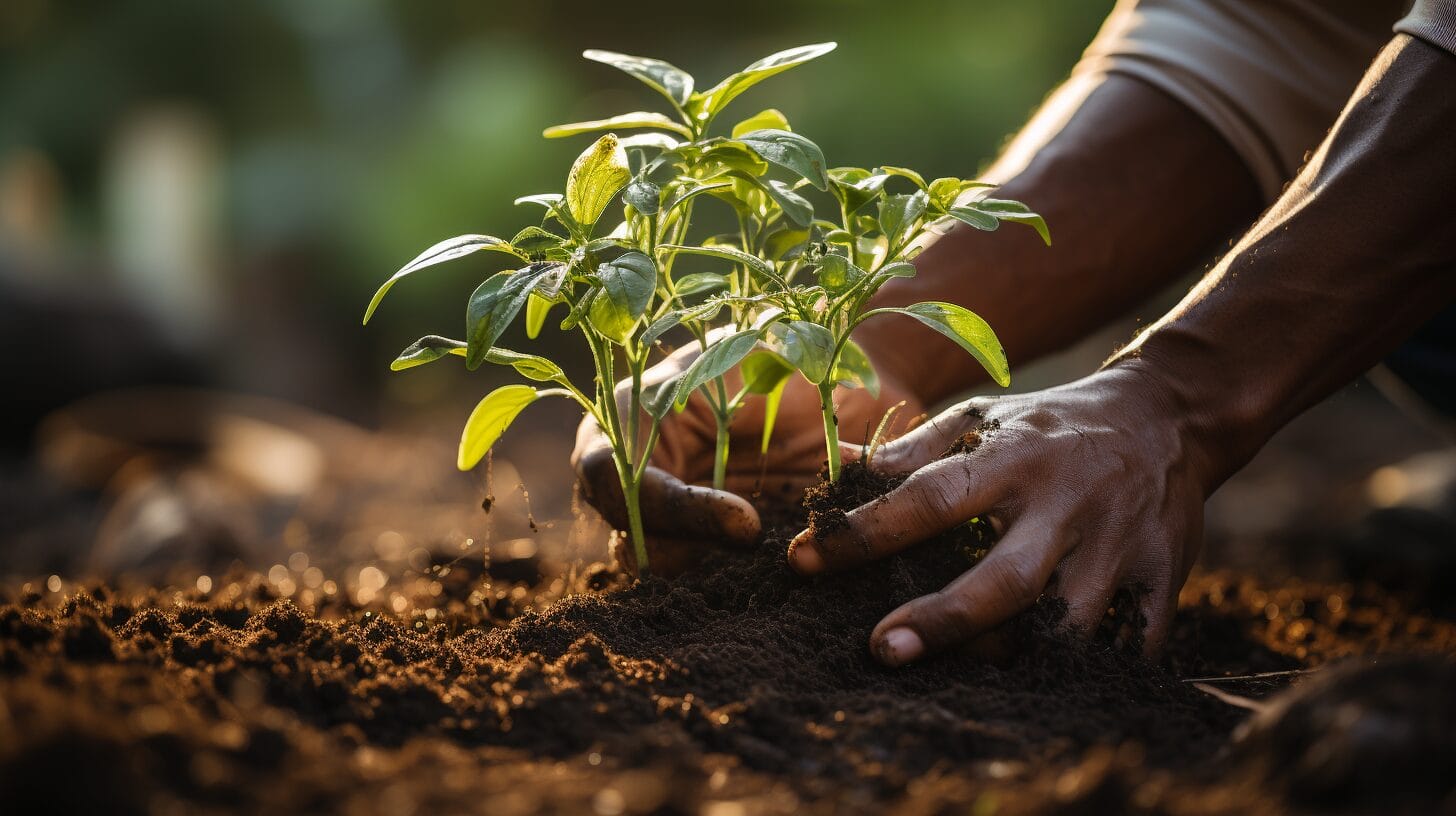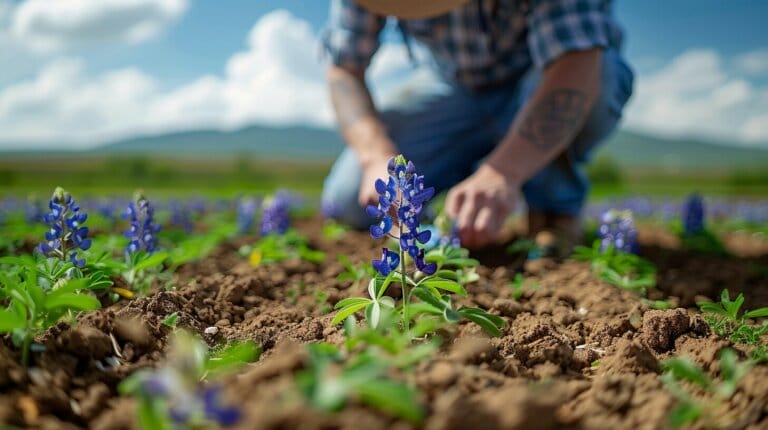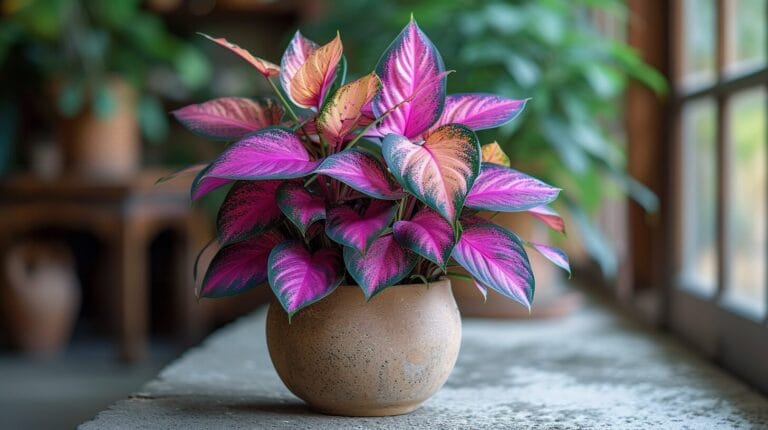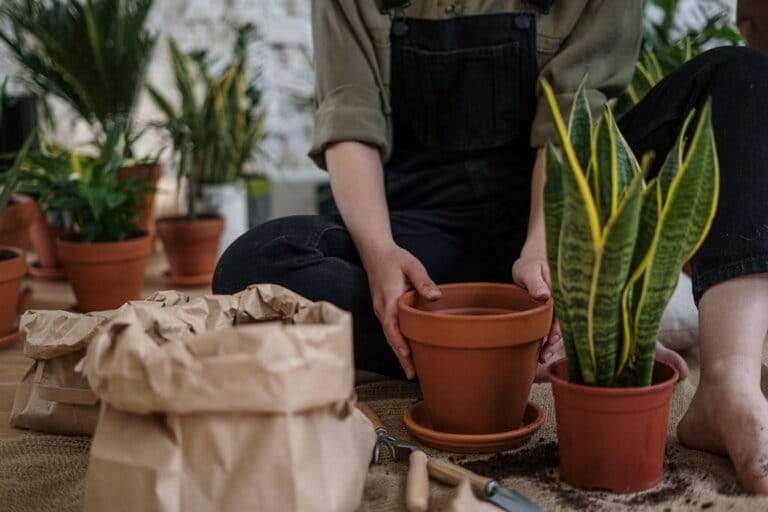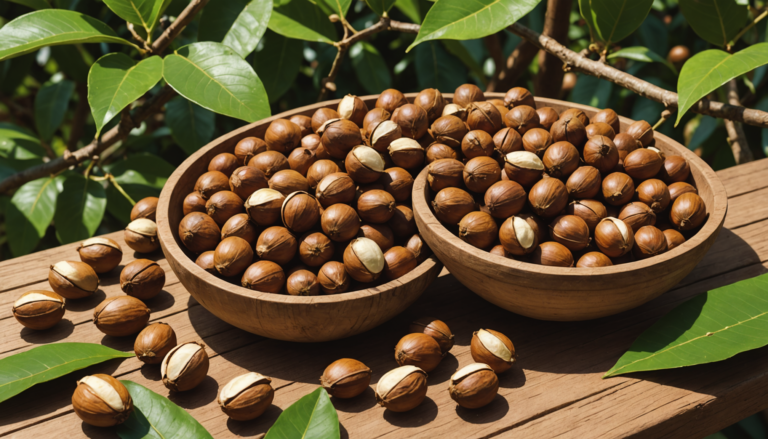As experienced gardeners, we see the twisted roots at the base of a plant pot as a wordless cry for liberation. Detangling these roots is not just a phase in the planting progression; it’s an essential rejuvenating act that’s critical to the plant’s future growth.
In our hands, a root-bound plant’s destiny hangs in the balance unless the plant is properly taken care of. With practiced fingers, we work to unravel the knot of roots at the bottom of the root ball that threatens to strangle its growth. Join us as we explore the careful art and science behind breaking up these dense networks, where every gentle tug could mean the difference between a plant that flourishes and one that merely survives.
Key Takeaways
- Loosening roots before planting promotes the effective establishment and growth of plants in new environments.
- Identifying signs of pot-bound and root-bound plants is crucial for timely action and proactive plant care.
- Techniques such as teasing roots apart and making vertical cuts in the root ball encourage root spread and alleviate circling patterns.
- Proactive measures like choosing the right-sized pot and repotting before plants become root-bound help maintain plant health and vigor.
Understanding the Importance of Loosening Roots Before Planting
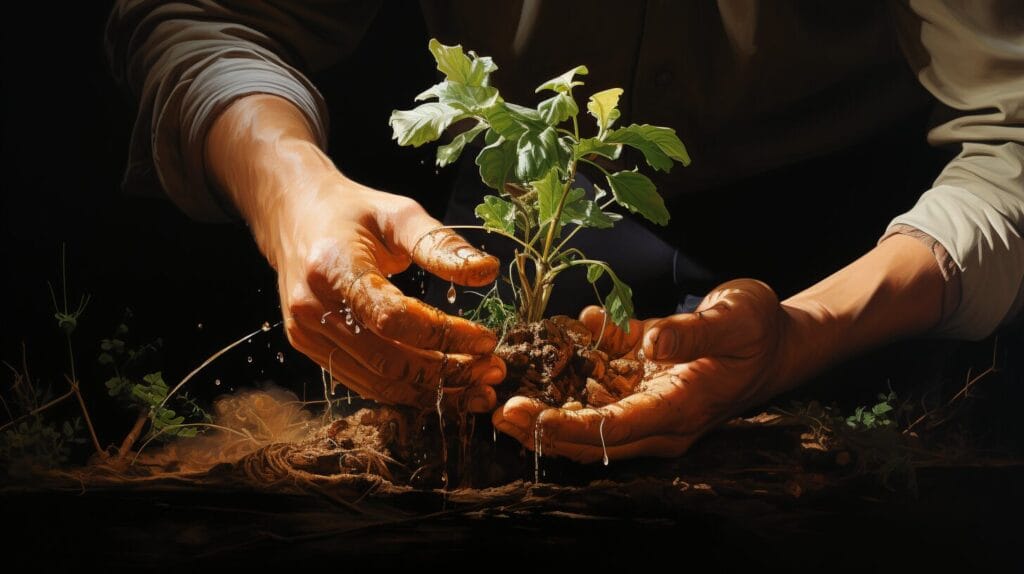
Loosening the roots around the root ball before planting is crucial as it enables root-bound plants to establish themselves more effectively in their new environment. A plant’s root ball, when root-bound, circles the pot’s confines, hampering nutrient and water absorption once transplanted. It’s our job to gently tease the roots apart, encouraging the root system to branch out into the surrounding soil. If we come across a particularly stubborn root ball, we’re not afraid to make a few careful cuts. This might seem harsh, but it’s a necessary step to break down barriers that prevent water and nutrient absorption.
A Gardener’s Guide to Identifying Pot-Bound and Root-Bound Plants
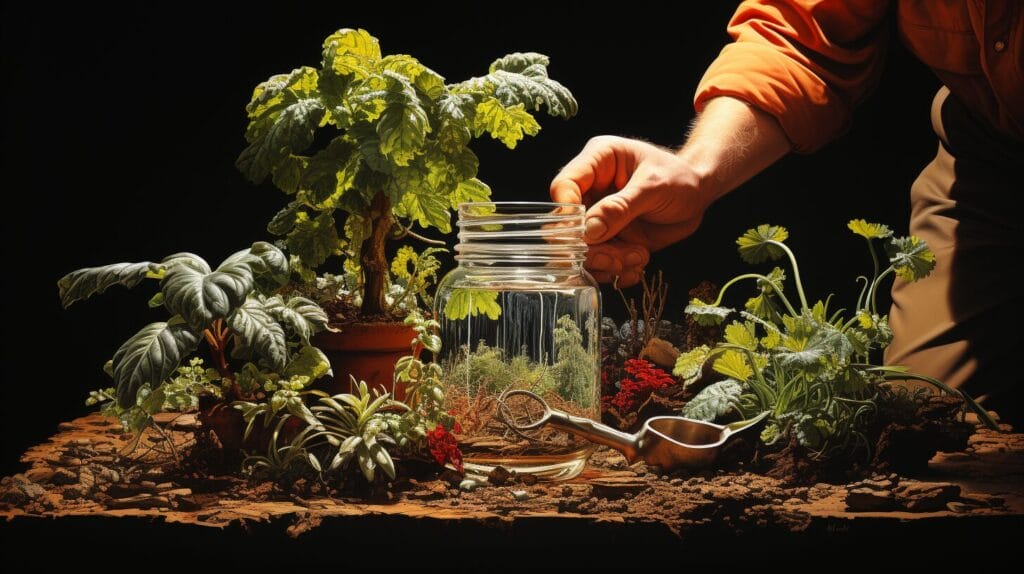
Identifying pot-bound and root-bound plants at the bottom of the pot is a critical step for gardeners. We’ve got to keep an eye out for roots circling the inside of the container, poking out of drainage holes, or a plant outgrowing its pot. During a transplant, a dense root ball is a dead giveaway. Annuals might stop growing, while perennials can begin to decline in vigor when cramped. A bit of root pruning or gentle teasing apart of the roots of a root-bound plant during repotting encourages the roots of root-bound plants to spread in their new home, especially at the edge of the pot.
The Science Behind Breaking Up the Root Ball: Techniques and Tips
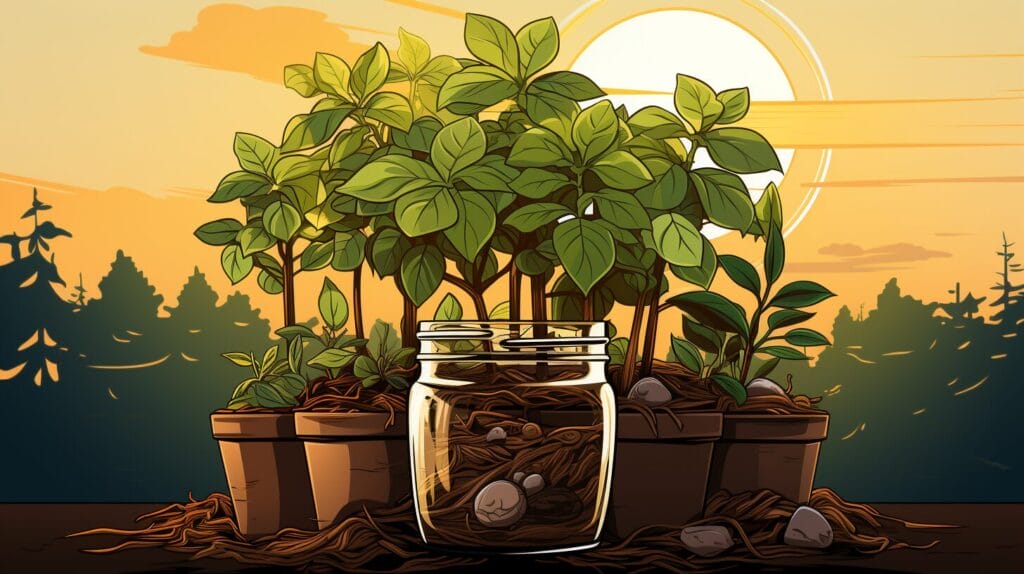
Delving into the science of root ball disruption, we uncover that this practice is pivotal for transplant success. By teasing roots, we loosen the roots and prompt new root growth at the bottom of the root ball, essential for the plant to thrive. Here’s a concise table that outlines effective root ball management techniques:
| Technique | Description |
|---|---|
| Teasing | Gently pulling apart roots to untangle them and promote outward growth. |
| Slicing | Making vertical cuts in the root ball to stimulate new roots and alleviate circling patterns is important for many plants. |
| Pruning | Trimming away excessively long or circling roots to balance root and shoot growth is necessary for many plants. |
| Watering | After transplanting your root-bound plant, it is crucial to hydrate it adequately to support recovery and enable new roots to grow. |
Avoiding the Pitfalls of Rootbound Plants: Proactive Measures for Plant Care
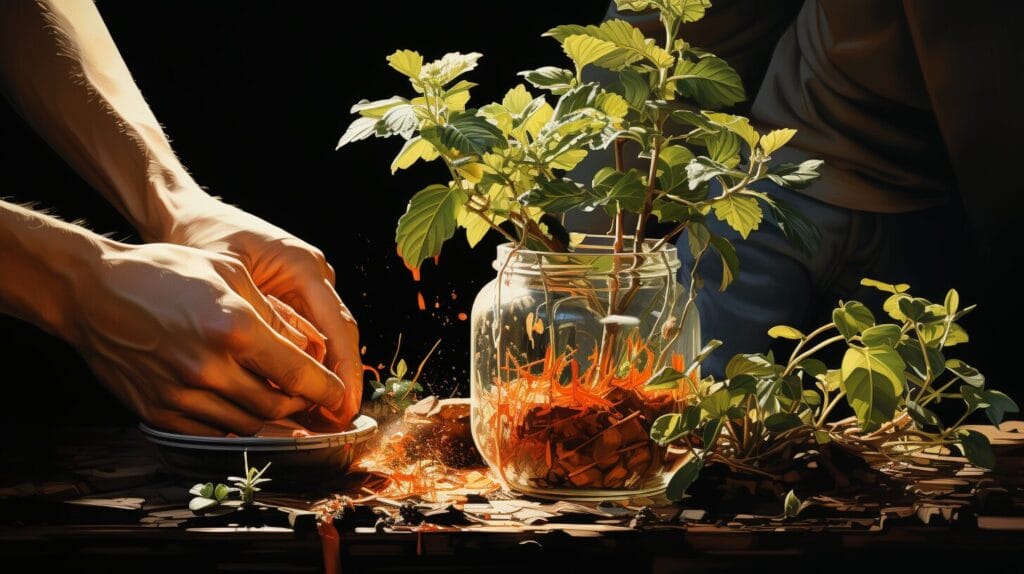
To prevent the stress and stunted growth associated with rootbound plants, we must proactively manage pot size and repotting schedules. Choosing the right pot and repotting before plants become root-bound or pot-bound helps maintain the health and vigor of the plant. By loosening the root ball and teasing out the roots gently during repotting, we encourage healthy branching.
Learning from Expert Gardeners: Best Practices in Dealing with Pot-Bound and Root-Bound Plants

Building on proactive measures, expert gardeners offer insights on effectively handling pot-bound and root-bound plants. Gently teasing out the roots encourages them to spread out in the planting hole. Sometimes, slicing through the roots with a clean, sharp tool is necessary to prevent the plant from strangling itself. Ensuring that the soil around the root ball is well-aerated gives the roots the best chance to grow and expand into their new environment.
Conclusion
We’ve delved into the whys and hows of loosening roots and the signs of pot-bound plants. Armed with knowledge and care, we prevent the pitfalls of root-bound growth, ensuring our plants can flourish.
An important technique is to break up roots when planting root-bound plants to gently loosen tangled root balls, stimulating renewed growth.
Let’s get our hands dirty and watch our gardens bloom!
Frequently Asked Questions
What does it mean when a plant is pot-bound or root-bound?
A plant becomes pot-bound or root-bound when the roots fill up the pot. The roots become dense and tangled with no room left to grow. It hampers the plant’s growth. You can break up roots when planting a root-bound plant into new soil or a larger pot.
This helps loosen up the tightly-packed root ball and encourages the plant to produce new roots out into the fresh growing medium.
What is the process of teasing roots during repotting?
Teasing roots in horticulture refers to the careful untangling and spreading out of the root ball, especially for pot-bound or root-bound plants. Break up roots when planting by gently pulling apart or teasing the roots at the top and sides of the root ball, you allow them to grow into the new soil more easily, helping the plant establish after transplant.
How can I safely untangle the roots of a seedling before planting?
Be very gentle while untangling the roots to grow a root-bound seedling. Using your fingers, gently tease apart the roots. If the rootball of the plant is severely meshed together, using a sharp, sanitized knife could help, it also helps to break up roots when planting helps.
Can pruning help with a root-bound plant?
Yes, pruning or trimming can aid a root-bound plant. However, it should be done with care. Pot-bound plant roots can be trimmed with a sharp knife.
Slicing the root ball of a root-bound plant, mainly on the bottom and sides of the plant, allows the roots to expand upon transplantation, to break up roots when planting. This process of breaking away dense matted roots right when transplanting helps the plant establish better by encouraging new root growth out into the surrounding soil it was lacking in the pot
What if I can’t break up roots when planting while teasing?
If roots don’t loosen up easily, you can use a sharp knife to make vertical slices on the sides of the root ball. It is essential to sanitize the knife before use to prevent root rot. Make sure to break up roots when planting to help stimulate new root growth out into the surrounding soil.
The key is to be gentle and patient, the roots should not be torn or unduly stressed. Making a few vertical cuts with a clean knife loosens up the root system so it can establish better in its new location.

